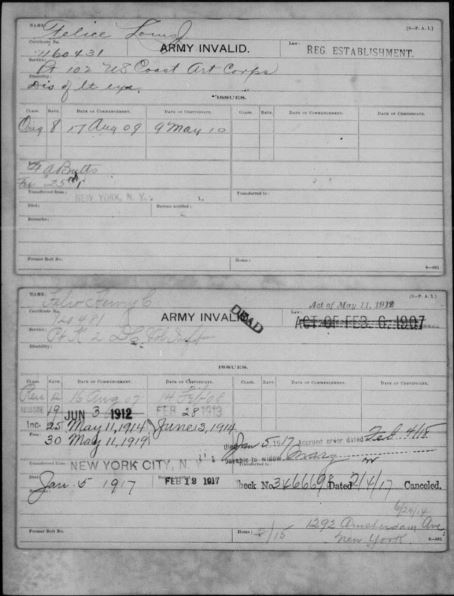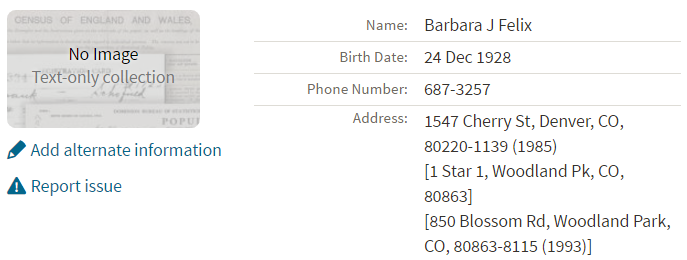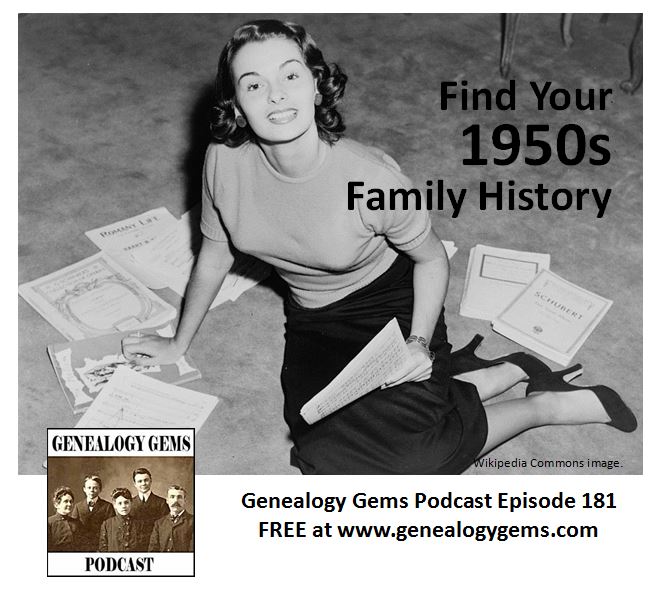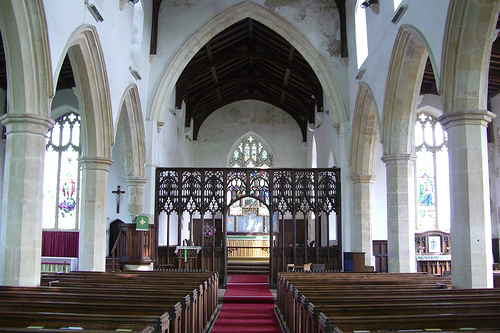by Lisa Cooke | Dec 1, 2013 | 01 What's New, FamilySearch, Military, Records & databases
FamilySearch recently added another 192 million+ images and indexed records from North and South America and Europe to its growing FREE online collections. In the list at the bottom of this post you’ll find content from Brazil, Colombia, Peru, Spain, Switzerland, the United States, and Wales.
Notable collection updates include the 314,910 images from the Spain, Province of Barcelona, Municipal Records, 1387–1936,
collection, the 576,176 indexed records from the United States Veterans Administration Pension Payment Cards, 1907–1933, collection, and the 189,395,454

Sample image from “United States Veterans Administration Pension Payment Cards, 1907-1933.” Index and images. FamilySearch. https://familysearch.org : accessed 2013.
indexed records from the United States Public Records Index.
Here’s an example of a V.A. pension card, created by the Bureau of Pensions and Veterans Administration to record payments to veterans, widows and other dependents. FamilySearch describes the cards this way: “On the front of the cards for invalid veterans are recorded the name of veteran, his certificate number, his unit or arm of Service, the disability for which pensioned, the law or laws under which pensioned, the class of pension or certificate, the rate of pension, the effective date of pension, the date of the certificate, any fees paid, the name of the pension agency or group transferred from (if applicable), the date of death, the date the Bureau was notified, the former roll number, and ‘home.’ On the reverse side of the form appears the name of the veteran, his certificate number, and the record of the individual payments. The army and navy widow’s cards are similar to the invalids’ cards with the addition of the widow’s name and occasionally information regarding payments made to minors, but they do not indicate if the veteran had a disability.”
|
Collection
|
Indexed Records
|
Digital Images
|
Comments
|
| Brazil, Mato Grosso, Civil Registration, 1848-2013 |
0 |
126,870 |
Added images to an existing collection. |
| Brazil, Minas Gerais, Catholic Church Records, 1706-1999 |
0 |
827 |
Added images to an existing collection. |
| Brazil, Pernambuco, Civil Registration, 1804-2013 |
0 |
94,516 |
Added images to an existing collection. |
| Colombia, Catholic Church Records, 1600-2012 |
0 |
111,526 |
Added images to an existing collection. |
| Peru, Puno, Civil Registration, 1890-2005 |
0 |
176,918 |
Added images to an existing collection. |
| Spain, Province of Barcelona, Municipal Records, 1387-1936 |
0 |
314,910 |
Added images to an existing collection. |
| Switzerland, Fribourg, Census, 1839 |
0 |
2,552 |
New browsable image collection. |
| Switzerland, Fribourg, Census, 1842 |
0 |
2,851 |
New browsable image collection. |
| Switzerland, Fribourg, Census, 1845 |
0 |
3,062 |
New browsable image collection. |
| Switzerland, Fribourg, Census, 1850 |
0 |
2,968 |
New browsable image collection. |
| Switzerland, Fribourg, Census, 1860 |
0 |
20,530 |
New browsable image collection. |
| Switzerland, Fribourg, Census, 1870 |
0 |
22,554 |
New browsable image collection. |
| U.S., Alabama, County Marriages, 1809-1950 |
324,971 |
690,459 |
Added indexed records and images to an existing collection. |
| United States Public Records Index |
189,395,454 |
0 |
Added indexed records to an existing collection. |
| United States Veterans Administration Pension Payment Cards, 1907-1933 |
576,176 |
0 |
Added indexed records to an existing collection. |
| United States World War I Draft Registration Cards, 1917-1918 |
644,004 |
0 |
Added indexed records to an existing collection. |
| Wales, Court and Miscellaneous Records, 1542-1911 |
0 |
84,676 |
Added images to an existing collection. |
by Lisa Cooke | Jun 15, 2016 | 01 What's New, Records & databases, Research Skills |
The US Public Records Index can be useful for genealogy–if you understand what it is and how to use it properly. Here’s an example and some tips.
Not long Russ sent in this tip recommending the US Public Records Index for genealogy:
“I was listening to Genealogy Gems Podcast 181 [in which] you were talking about where do we search while we are waiting for the 1950 Census….I recently discovered a wonderful resource, on Ancestry.com, that I have used along with city directories. The name of the record group doesn’t sound interesting but it can be a Gem for you: the US Public Record Index, 1950-1993, Volume 1 and 2. Volume 1 is far more interesting with more data. A search will return a name AND birth date, along with more than one address, zip code and sometimes phone numbers.”
Here’s a sample search result:

Russ kindly sent me Ancestry’s description of its online database for Volume 1, which says that original data comes from public records spanning all 50 states, such as voter registration lists, public record filings, historical residential records and other household database listings.
Collection Profile
What: U.S. Public Records Index
Where: Ancestry, FamilySearch, MyHeritage
Years Spanned: 1950-2009
Source Type: Lacking original source citations. “Hints to go on and follow up with further research into verifiable sources.”
Then he shared the following example of using the US Public Records Index to find recent relatives that he can’t look up yet in the 1950 census:
“I had a hint for a cousin in a yearbook. I know that she recently lived in Philadelphia, Pennsylvania. I didn’t know where she went to college and I know her birthday. The name is not unique, not also not common. At the same time, I had the hint for the Public Record Index. You know those things we can’t use in a proof argument, but there [she] was in Philadelphia. The yearbook had her picture and only her name, not spelled the way I know it, but the Public Record Index puts her in Philadelphia at the right time and place.
I have seen 2 or 3 addresses for folks in the 1980s and 1990s in these indexes. Not all addresses have dates, but some do. I have one cousin with 5 addresses since 1983 and he won’t be in a census until the 1960 Census Records are released.”
Russ blogs about his family history at worthy2be.wordpress.com/. Thanks for the tip!
The U.S. Public Records Index pops up in my search results sometimes, too. Both volume 1 and volume 2 are searchable on Ancestry.com, as Russ says, in separate databases. Each has over 400,000 records in it. There’s also a free partial version of this database for 1970-2009 at FamilySearch.org and yet a third version at MyHeritage, with 816 million records, with nearly the same time frame. The FamilySearch database says its data comes from “telephone directories, property tax assessments, credit applications, and other records available to the public.”
More on the US Public Records Index
Here are a few tips worth mentioning about the US Public Records Index. Some of these points come from the FamilySearch wiki:
- Not everyone who lived in the U.S. appears in the index, and you’re more likely to find birth information for those born between 1900 and 1990. What you’ll find is primarily where someone lived, and often when they lived there.
- It’s rarely possible to positively identify a relative in this index since there’s limited information and it spans the entire country for up to a half-century, and you can’t follow up on the record it comes from because the index doesn’t say where individual records come from. So as Russ says, this is a great resource to use in combination with other records. It’s a similar concept to the way you might consult family trees that lack sources: hints to go on and follow up with further research into verifiable sources.
- When you find more recent listings, you can sometimes find telephone numbers for living distant relatives. If the thought of cold-calling distant relatives seems a little intimidating, listen to my Family History: Genealogy Made Easy podcast, episodes 14-15, for tips–and to get your courage up!
 More Gems on Researching Recent Relatives
More Gems on Researching Recent Relatives
by Lisa Cooke | Nov 24, 2013 | 01 What's New, Australian, FamilySearch, Findmypast, Irish, Records & databases
 More than 13 million new records recently appeared on findmypast.com, thanks to a new agreement between findmypast parent company DC Thomson Family History (formerly brightsolid online publishing) and FamilySearch International.
More than 13 million new records recently appeared on findmypast.com, thanks to a new agreement between findmypast parent company DC Thomson Family History (formerly brightsolid online publishing) and FamilySearch International.
Among these millions of records are “major collections of births, marriages and deaths covering America, Australia, and Ireland,” according to a FamilySearch.org press release. Millions more records from about 600 additional collections are yet to be added. findmypast hopes these records will help current subscribers and allow the company to expand to non-English-speaking markets.
The FamilySearch press releases describes the overall purpose of the collaboration as delivering “a wide range of projects including digital preservation, records search, technological development and the means to allow family historians to share their discoveries.”
by Lisa Cooke | Dec 3, 2013 | 01 What's New, British, Church, FamilySearch
Over a million Church of England records from the county of Norfolk are among materials now indexed at FamilySearch.org.

Happisburgh church of St. Mary’s, Norfolk. Image by Martin at Flickr Creative Commons.
The collection includes bishops’ registers of baptisms, marriages and burials from the mid-1600s to the mid-1900s.
- Baptismal records may include the child’s name, date and place of baptism, parents’ names and residence, legitimacy status of the child, father’s occupation and minister’s name.
- Marriage records may include the names, ages, marital status and residence of bride and groom; date and place of marriage; fathers of the bride and groom and information on whether banns were published.
- Burial records may include the name, age, and residence of the deceased and the date and parish of burial.
The Church of England was a state-sponsored church. This helps genealogists because it means that most everyone who lived there (until the mid-1800s or so) is likely to show up in Church of England records. So if you had English ancestors who lived in Norfolk, take a look. These images have been online since 2010, but the new index makes them a lot easier to search!
by Lisa Cooke | Nov 10, 2013 | 01 What's New, Canadian, Inspiration, Oral History
 The Victoria Genealogical Society has started a new memory project called “Voices of the Past.” They are recording the stories of senior members of their community and posting them to their website. You can listen to any given story or click on one of the themes they’ve organized the material into, then listen to stories relating to that theme.
The Victoria Genealogical Society has started a new memory project called “Voices of the Past.” They are recording the stories of senior members of their community and posting them to their website. You can listen to any given story or click on one of the themes they’ve organized the material into, then listen to stories relating to that theme.
I heard about it from Merv Scott, a Project Director at the Victoria Genealogical Society. Merv sees this project as a win-win experience for those telling stories and those receiving them. “I’m sure you have seen how uplifting it is for seniors to tell stories about their family history,” he writes. “Research has shown it boosts their self-esteem reduces stress and anxieties….I think it’s an amazing legacy to leave your children and grandchildren with stories about their family as told by the person who was there. ” You can contact Merv (Projects@victoriags.org) for more information.
I’ve heard about lots of oral history projects, from the national in scope to the most local. Browse some of these (and find tools and resources for doing your own) at Cyndi’s List.



 More Gems on Researching Recent Relatives
More Gems on Researching Recent Relatives

